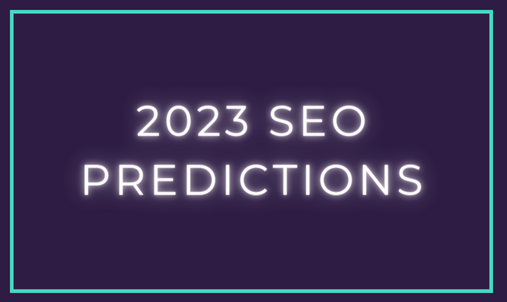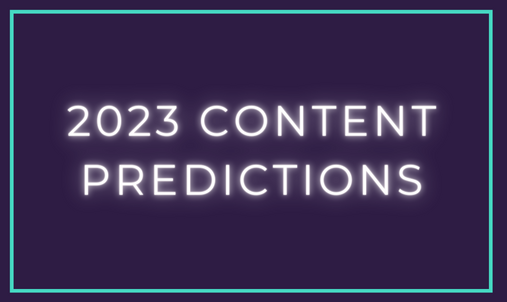2023 Data Predicitons
Cookies clinging on, but a renewed focus on privacy
The death of third-party cookies, or at least the point at which Chrome (with 65% of browser market share) blocks them, has been pushed back until 2024, as replacement privacy-first technologies are still being tested and shared. Tracking behaviours and information from users across multiple sites is one thing, but there’s often confusion concerning how this relates to first-party tracking of users’ engagement with owned websites and apps via Google Analytics.
In early October, the government of the day announced that the UK will be replacing GDPR with its own data privacy system that will be elaborated on in the coming year. If it materialises, this will need to strike a balance between simplifying data privacy laws – which explicitly includes tracking for analytics being opted in for users by default – and not misaligning too much with EU privacy laws to complicate any data transfer or access for web users outside of the UK. The prevailing advice is still to obtain consent from users and make it clear what analytics tracking cookies will be set and why.
But what happens when users opt out of cookies for analytics and ad platforms? Google has that covered with Consent Mode: a solution that enables tags for Google Ads, Floodlights (for DV360 programmatic activity for example) and Analytics to respond to user cookie preference. Consent Mode introduces additional tags that allow Google to collect anonymous interaction data whilst respecting user choice not to be tracked.
Consent Mode allows brands to track conversions from ad campaigns based on anonymous and aggregated interaction data rather than just blocking everything. Google’s latest version of Analytics, GA4, uses machine learning to model conversions and engagement to cover the loss of direct tracking. Properly implemented Consent Mode is a prerequisite of benefitting from that.
Rounding up data centralisation stragglers
In under two years we’ve gone from less than 10% to over 70% of clients utilising our data warehousing and transformation services. As the standard version of Universal Analytics bids us farewell on 1st July, 2023, those who don’t already send Analytics data for storage in a data warehouse will likely need to give it some thought beforehand, lest they lose access to their historic web tracking data. Equally, GA4 comes with a free connector to BigQuery (Google’s cloud data warehouse), but will only store 14 months’ historic data within GA4 itself: third-party storage of performance data will be both easier and essential for historic comparisons within GA4 as well as for comparing GA4 with legacy Universal Analytics data.
The stripped down amount of reports in the new version of Analytics also put an emphasis on creating your own explorations and reports, which may prompt some users to seek a certain amount of continuity with reporting from Universal Analytics in another visualisation tool; as well as being a starting point for unlocking the possibilities of combining and analysing web and app engagement data with other customer touchpoints and information.
First-party data strategy matures rapidly
Many of our Growth Marketing strategies relate back to efficient use of customer data in optimising campaign activity based on actual outcomes, as well as using demographic profiling to improve messaging and targeting for new and returning audiences. There’s been a fairly recent shift, mostly along with the rapid digital transformation arising during Covid, of treating CRM data activation as an ‘always-on’ strategy, rather than something to be done when a product or strand of activity wasn’t performing. 2023 will see growing demand for automation in the collection of CRM data for use in wider reporting stacks, mainly out of necessity for crucial data to be visualised, surfaced and acted upon rapidly during an economic downturn, but also a growing trend and appetite for platforms to support the data being de-siloed.
MarTech’s 2022 Replacement Survey, where 23% of respondents replaced a CRM tool in the past year, indicated that the facility for integration and open APIs were the most important factor in choosing a replacement. Closely followed by over half who also mentioned data centralisation capabilities.
B-ringing call data to the fore
Call tracking has some of the greatest potential for making what you have more efficient. We work with many clients with high-value products – property for example – that require analysing multiple touchpoints over long periods to truly understand customer journeys, brand sentiment and consumer opinions. Calls give a unique insight into an audience and there are usually simple steps to segment data on regional and product levels that can give a competitive edge in the market. With automation and cross-platform integration now must-haves for many marketeers, the leading call tracking platforms are turning the volume up on activating the data signals from calls as part of wider measurement ecosystems, including yielding qualitative data about the contents of calls alongside more traditional quantitative metrics around call volume and length.
Making call outcomes an automated and influential part of marketing optimisation and strategy can take a number of forms. Integrations with the likes of Google Ads and Meta can ensure that campaigns and keywords can be continually optimised based on call goals as well as website conversion actions like form completions or downloads. Adding call events into Google Analytics can enrich understanding of individual campaign performance across multiple digital channels and of their place in customer journeys. CRM integrations can ensure identification of the highest value calls, allowing an analysis of which calls and which call sources drive the most successful outcomes.
The AI behind speech analytics can take a lot of the work out of interrogating many strands of data available from conversations and refine successful call measurement based on actual outcomes rather than an arbitrary call duration. In tough economic times that will persist into 2023, this isn’t just a case of marketing and using technology for a competitive edge, it’s a focus on customer experience strategy and analysing where things may be falling short at scale, at speed.
Predicting more predictive
An array of factors mean that businesses of all sizes are now combining data into more capable, wide-ranging measurement and insights ecosystems, and demanding that partners and providers support their wider goals.
It’s a given that most analytics and ad platforms now offer some form of automation. This includes suggestions on emerging trends and patterns to interrogate, as well as anomaly detection for campaign metrics that fall outside usual levels and warrant investigation. GA4, for example, offers new predictive metrics including purchase probability, revenue prediction and churn probability – all particularly useful for e-commerce outcomes and app reporting.
These can be useful for individual analysis and optimisation within the confines of the data available to the platforms. However, with the trend towards the centralisation of business data, I predict there will be an expectation and acceleration of applying machine learning and predictive measures to the broader combined data set in 2023.







